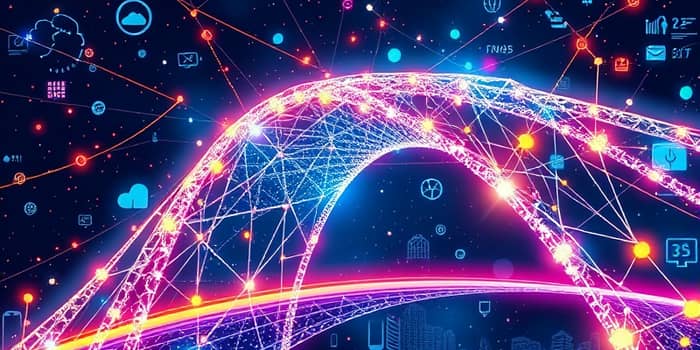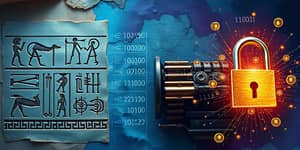From automated financial agreements to supply chain transparency, modern blockchains depend on a constant stream of external information. But blockchains on their own cannot access data outside their secure network. This is where oracles come in as indispensable gateways.
In this article, we explore the anatomy of oracles, their critical use cases, market dynamics, security challenges, and future trends that will shape how digital ecosystems evolve.
Understanding Blockchain Oracles
A blockchain oracle is at its core a service that query, verify, and transmit real-world data into a smart contract’s world. By bridging the gap between off-chain and on-chain environments, oracles empower autonomous code to react to changing external conditions.
Without these bridging entities, smart contracts would remain static, only aware of data recorded within the blockchain itself. Oracles solve this isolation by fetching data from APIs, IoT sensors, web scraping tools, and more, then validating and relaying it to blockchain networks.
Why Oracles Are Essential
Blockchains are intentionally designed as closed systems. While this ensures data integrity and trustless consensus at the core protocol level, it also creates a barrier when contracts need real-world inputs.
Oracles remove that barrier by serving as reliable, tamper-proof bridges between on-chain logic and external databases, weather feeds, price aggregates, and event outcomes. This expands blockchain utility far beyond simple token exchanges.
By integrating oracles, developers can build financial derivatives that settle on real market prices, insurance policies triggered by weather data, supply chain checkpoints based on IoT sensor readings, and much more.
How Blockchain Oracles Work
The lifecycle of oracle data involves three core stages: retrieval, validation, and delivery.
First, data retrieval connects to APIs, sensors, or web sources. The oracle’s off-chain component collects raw inputs, which might range from stock prices to an official sports score.
Next comes validation. To protect against manipulation or single points of failure, many oracles adopt decentralized oracle networks for enhanced security. In this model, multiple nodes independently acquire and sign the same data feed, then consensus mechanisms determine the final, accurate value.
Finally, data delivery occurs when the oracle writes the validated information to a designated smart contract. Some advanced systems even enable cross-chain compatibility and seamless integration, pushing data simultaneously to multiple blockchains or external systems.
- Software Oracles: Interfaces that fetch data from online APIs and digital sources.
- Hardware Oracles: Bridges connecting physical sensors and IoT devices.
- Consensus-Based Oracles: Networks aggregating multiple inputs to ensure accuracy.
- Cross-Chain Oracles: Solutions that share data across different blockchain platforms.
Real-World Use Cases Enabled by Oracles
Oracles unlock a spectrum of applications, transforming theoretical blockchain benefits into tangible services.
- DeFi Price Feeds: Decentralized exchanges and lending platforms rely on live market values to calculate collateral ratios and interest rates.
- Parametric Insurance: Policies that automatically pay out when predefined weather or seismic thresholds are met.
- Gaming and NFTs: Provably fair randomness and external event verification for interactive experiences.
- Supply Chain Tracking: Real-time provenance and condition monitoring using IoT sensors connected through oracles.
- Identity Verification: Securely linking government or compliance data to on-chain identity systems.
Market Landscape and Major Players
The blockchain oracle market reached a valuation of $1.42 billion in 2024, reflecting a surge in demand as decentralized finance and enterprise use cases expand.
Chainlink stands at the forefront, securing over $93 billion in on-chain value by 2025 and commanding approximately 67% market share. Other notable platforms like Band Protocol, API3, DIA, and Pyth Network are innovating in specialized niches.
Despite a slight decline in Total Value Secured since 2022, oracle networks remain a lynchpin for emerging blockchain applications. Their importance only grows as new sectors adopt smart contract automation.
The Oracle Problem: Risks and Security
Oracles introduce a critical trust component: if an oracle feeds incorrect or manipulated data, smart contracts can behave unpredictably or be exploited.
Centralized oracles create single points of failure. To counteract this, decentralized oracle networks (DONs) distribute trust across multiple independent nodes and rely on cryptographic proofs to demonstrate data integrity and authenticity.
Additional security practices include reputation systems, financial staking to penalize bad actors, and fallback mechanisms that route around unresponsive nodes.
Future Trends and the Evolving Role of Oracles
Looking ahead, oracles will extend into areas like IoT-driven automation, advanced governance models, and cross-industry collaborations. Hybrid smart contracts that combine on-chain code with off-chain computation are set to become more common.
Innovations such as verifiable randomness functions (VRFs), layer-2 scaling oracles, and improved incentive structures will further strengthen oracle reliability and performance.
As blockchain adoption accelerates in sectors from healthcare to logistics, the need for robust, low-latency, and widely interoperable oracles will only intensify. Developers and enterprises should weigh factors like decentralization level, data source diversity, and latency requirements when selecting oracle solutions.
Conclusion: Oracles as the Bridge to Blockchain’s Full Potential
In the quest to build autonomous, transparent, and trustless systems, oracles serve as the essential bridge linking blockchains to the dynamic outside world. Their evolution dictates how quickly and securely new use cases can emerge.
- Assess decentralization and consensus models.
- Evaluate data source diversity and reliability.
- Consider latency and throughput requirements.
- Review security measures and fallback protocols.
By understanding oracle architectures, embracing decentralized networks, and prioritizing security best practices, teams can harness the full transformative power of smart contracts. As an architect of tomorrow’s digital landscape, you hold the key to unlocking these possibilities: choose your oracles wisely, design with real-world data in mind, and prepare for a future where every contract can interact seamlessly with reality itself.
References
- https://stellar.org/learn/smart-contract-basics-oracles
- https://coinlaw.io/chainlink-statistics/
- https://trakx.io/resources/insights/what-are-blockchain-oracles/
- https://caladan.xyz/decentralised-oracle-market-landscape/
- https://chain.link/education/blockchain-oracles
- https://market.us/report/blockchain-in-erp-market/
- https://www.coinbase.com/learn/crypto-glossary/what-is-a-blockchain-oracle-in-crypto
- https://growthmarketreports.com/report/blockchain-oracles-market










